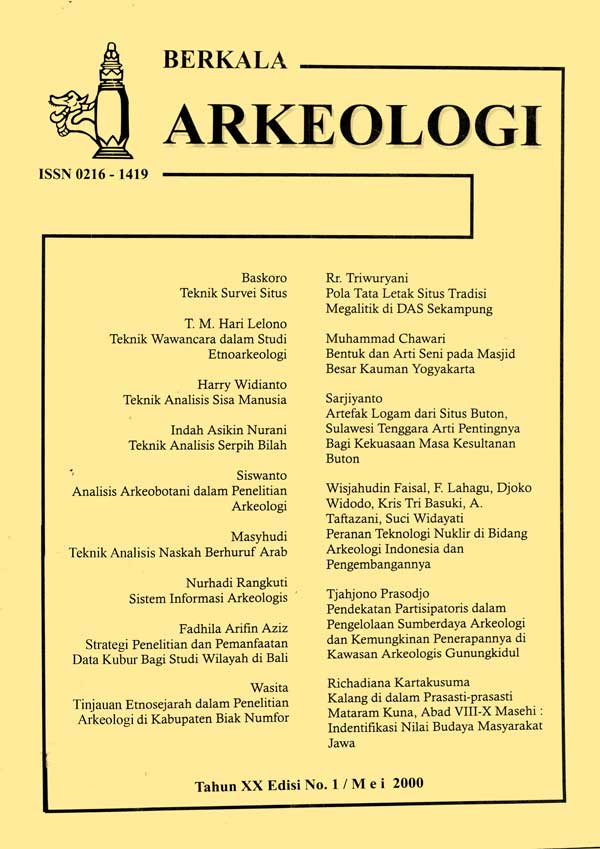TEKNIK WAWANCARA DALAM STUDI ETNOARKEOLOGI
Main Article Content
Abstract
In the context of ethnoarcheology, the data needed is as much information as possible about concepts and perceptions, therefore it is emphasized on data collection through informants, not on respondents. These two things are very important, because they have very different implications. Informants are people who can provide the widest possible information based on their cultural perceptions. Meanwhile, the respondent is the person who responds to the researcher, so that the data obtained is in accordance with the wishes / concepts possessed by the researcher. Meanwhile, the data needed is to bridge the material culture that was left behind in the form of information, so it would be more appropriate to use informants. There are conditions that must be fulfilled as a good informant in research. Indeed, ideally the conditions that will be discussed below meet all the requirements, but if they are not completely met, it does not reduce the validity of the data / information required.
Article Details

This work is licensed under a Creative Commons Attribution-NonCommercial-ShareAlike 4.0 International License.
References
Koentjaraningrat, Metode-Metode Penelitian Masyarakat, PT. Gramedia, Jakarta.
Koentjaraningrat, 1981. Pengantar Ilmu Antropologi, Aksara Baru, Jakarta.
Mundardjito, 1981. Etnoarkeologi: Peranannya Dalam Pengembangan Arkeologi di Indonesia, Seminar Sejarah Nasional III, Jakarta, 10--15 November.
Schiffer, M.B.1978. "Methodological Issues in Ethnoarchaeology", Exploration in Ethnoarchaeology, Albuquerque: University of' ew Mexico.
Sulistyanto, Bambang, 1999. Teknik Pengumpulan Data Etnografi. PIA VIII, Yogyakarta, Februari.
Wibisono, Sonny. Chr, 1985. Metode Penelilian Etnoarkeologi, REMPA II, Pandeglang, Jawa Barat 6 -- 12 Mei.

